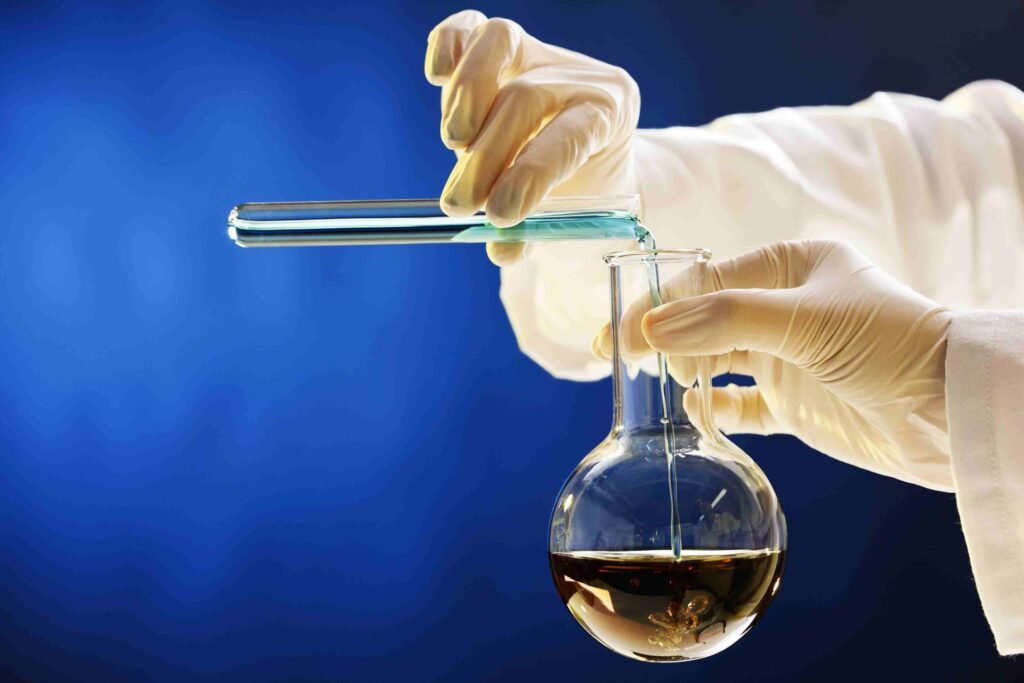In the second term of SS2 Chemistry, students delve into a variety of topics centered around chemical reactions, elements, and compounds. These concepts are foundational for understanding the nature of matter and its interactions. This article provides a detailed breakdown of the SS2 Scheme of Work for Chemistry, with easy-to-understand explanations of each topic. We’ve also included practical examples to help make complex concepts more accessible to beginners and learners at different stages.
Scheme of Work: SS2 Second Term
| Week(s) | Topic(s) | Content |
|---|---|---|
| Week 1 | Rate of Reactions | Understanding the factors that affect the speed of chemical reactions, such as temperature, concentration, surface area, and catalysts. |
| Week 2 | Types of Chemical Reactions | A look at different chemical reaction types, including synthesis, decomposition, single replacement, double replacement, and combustion reactions. |
| Week 3 | Chemical Equilibrium | The concept of reversible reactions and the principle of chemical equilibrium. Understanding Le Chatelier’s principle and how equilibrium is affected by changes in concentration, temperature, and pressure. |
| Week 4 | Non-metals | Study of non-metals, their properties, and their uses. |
| Week 5 | Oxygen | Exploring the properties and reactions of oxygen, one of the most essential elements in both life and chemistry. |
| Week 6 | Halogens | A study of the halogen group of elements (fluorine, chlorine, bromine, iodine, and astatine), their properties, and common reactions. |
| Week 7 | Nitrogen | In-depth exploration of nitrogen, its properties, and its important compounds. |
| Week 8 | Compounds of Nitrogen | Understanding key nitrogen compounds, such as ammonia, nitrogen oxides, and nitric acid. |
| Week 9 | Sulphur | Study of sulfur, its properties, and how it forms compounds. |
| Week 10 | Compounds of Sulphur | Understanding the various compounds of sulfur, including sulfur dioxide, sulfuric acid, and hydrogen sulfide. |
| Week 11 | Revision | A comprehensive review of all topics covered throughout the term, focusing on problem-solving and application of concepts. |
| Week 12 | Examination | A final examination that tests students’ understanding of all the concepts studied in the term. |
Detailed Explanations of Topics
Week 1: Rate of Reactions
What is Rate of Reaction? The rate of reaction refers to how quickly or slowly reactants are converted into products in a chemical reaction. This concept is important for understanding various real-world chemical processes, such as cooking, rusting, and industrial chemical production.
Examples:
- The rapid fizzing when you mix baking soda with vinegar.
- The speed at which a metal rusts when exposed to oxygen.
- The faster reaction rate when a reactant is heated.
- The difference in reaction rates when using a powdered solid versus a large chunk of solid.
- Catalysts speeding up the breakdown of hydrogen peroxide.
- The reaction between acid and base when they are mixed.
Week 2: Types of Chemical Reactions
Understanding Chemical Reactions Chemical reactions can be classified into various types. Some of the main types are:
- Synthesis: Two or more reactants combine to form a single product.
- Decomposition: A single reactant breaks down into two or more products.
- Single Replacement: One element replaces another in a compound.
- Double Replacement: Two compounds react and exchange their components.
- Combustion: A substance reacts with oxygen, producing heat and light.
Examples:
- Synthesis: 2H₂ + O₂ → 2H₂O (Formation of water).
- Decomposition: 2H₂O → 2H₂ + O₂ (Decomposition of water).
- Single Replacement: Zn + 2HCl → ZnCl₂ + H₂ (Zinc reacting with hydrochloric acid).
- Double Replacement: NaCl + AgNO₃ → NaNO₃ + AgCl (Formation of a precipitate).
- Combustion: CH₄ + 2O₂ → CO₂ + 2H₂O (Burning of methane).
Week 3: Chemical Equilibrium
What is Chemical Equilibrium? Chemical equilibrium occurs in reversible reactions, where the rates of the forward and reverse reactions are equal, leading to no net change in the concentrations of reactants and products.
Examples:
- The reaction between nitrogen and hydrogen to form ammonia: N₂ + 3H₂ ⇌ 2NH₃.
- The equilibrium between carbon dioxide and water to form carbonic acid: CO₂ + H₂O ⇌ H₂CO₃.
- The dissociation of acetic acid in water: CH₃COOH ⇌ CH₃COO⁻ + H⁺.
- The decomposition of dinitrogen tetroxide into nitrogen dioxide: N₂O₄ ⇌ 2NO₂.
- The ionization of a weak acid like acetic acid: CH₃COOH ⇌ CH₃COO⁻ + H⁺.
- The equilibrium between hydrogen and iodine: H₂ + I₂ ⇌ 2HI.
Week 4: Non-metals
What are Non-metals? Non-metals are elements that do not have the characteristic properties of metals, such as conductivity and malleability. They are typically poor conductors of heat and electricity, and they can exist as solids, liquids, or gases.
Examples:
- Oxygen, essential for respiration.
- Nitrogen, which makes up 78% of Earth’s atmosphere.
- Sulfur, commonly used in fertilizers and medicines.
- Chlorine, used in disinfectants.
- Phosphorus, used in fertilizers.
- Carbon, the basis of all life forms.
Week 5: Oxygen
Properties of Oxygen Oxygen is a highly reactive element that supports combustion and is essential for life. It is found in water, and it is involved in various metabolic processes.
Examples:
- Oxygen supports combustion, such as in the burning of wood.
- Oxygen in water allows aquatic life to survive.
- The use of oxygen in medical breathing devices.
- Oxygen in the atmosphere supports respiration in animals and plants.
- The formation of ozone (O₃) in the upper atmosphere.
- Oxygen reacting with metals to form metal oxides.
Week 6: Halogens
What are Halogens? Halogens are a group of five elements—fluorine, chlorine, bromine, iodine, and astatine—that are highly reactive. They readily form salts when combined with metals and have various industrial and household uses.
Examples:
- Chlorine used in disinfecting water.
- Fluorine in toothpaste to prevent tooth decay.
- Bromine used in fire retardants.
- Iodine used in medical antiseptics.
- The reaction of chlorine with sodium to form sodium chloride (table salt).
- The use of iodine in thyroid treatments.
Week 7: Nitrogen
What is Nitrogen? Nitrogen is a non-metal gas that makes up about 78% of the Earth’s atmosphere. It is inert at room temperature and plays a critical role in biological processes.
Examples:
- Nitrogen as a fertilizer in agriculture.
- Nitrogen in the atmosphere prevents the combustion of oxygen.
- The use of nitrogen in food packaging to extend shelf life.
- The nitrogen cycle in the environment.
- Nitrogen as a cryogenic liquid in medicine.
- The role of nitrogen in the production of ammonia for fertilizers.
Week 8: Compounds of Nitrogen
Common Nitrogen Compounds Nitrogen combines with various elements to form important compounds, such as ammonia (NH₃), nitric acid (HNO₃), and nitrogen oxides.
Examples:
- Ammonia (NH₃) used in fertilizers.
- Nitric acid (HNO₃) used in manufacturing explosives.
- Nitrogen dioxide (NO₂) produced in car exhausts.
- Nitrous oxide (N₂O), also known as laughing gas.
- Urea (NH₂CONH₂), used in fertilizers.
- Nitrogen trichloride (NCl₃), a highly reactive compound.
Week 9: Sulphur
Properties of Sulphur Sulfur is a non-metal element that is commonly found in nature. It is an essential element for life, especially in proteins and vitamins, and it has industrial applications.
Examples:
- Sulfur used in the production of sulfuric acid.
- Sulfur as a fungicide in agriculture.
- Sulfur in the production of vulcanized rubber.
- The sulfur in coal contributing to air pollution.
- The use of sulfur in matches.
- Sulfur’s role in the body as part of amino acids.
Week 10: Compounds of Sulphur
Key Sulfur Compounds Sulfur combines with other elements to form compounds that are widely used in industry, including sulfuric acid (H₂SO₄) and hydrogen sulfide (H₂S).
Examples:
- Sulfuric acid (H₂SO₄), one of the most produced industrial chemicals.
- Hydrogen sulfide (H₂S), a gas that smells like rotten eggs.
- Sulfur dioxide (SO₂), used in food preservation.
- Sulfur hexafluoride (SF₆), used in electrical equipment.
- Sulfates used in soaps and detergents.
- Thiosulfates used in photography.
Week 11: Revision
This week will focus on revising all the concepts learned in the previous weeks, ensuring that students understand the core principles of chemistry, with a focus on problem-solving techniques.
Week 12: Examination
The term will conclude with an examination that will assess students’ grasp of all the topics covered, including the practical application of chemical reactions, understanding the properties of elements and their compounds, and solving related problems

